See other Science/Tech Articles
Title: Phobos & Deimos, The Moons of Mars
Source:
ufos-aliens.co.uk/
URL Source: http://www.ufos-aliens.co.uk/cosmicmars.htm
Published: Jul 25, 2006
Author: n
Post Date: 2006-07-25 12:57:02 by gengis gandhi
Keywords: None
Views: 73
Comments: 1
Phobos & Deimos, The Moons of Mars Could Phobos be a hollowed-out space station of huge proportions? In July 1988, the Russians launched two unmanned satellite probes - Phobos 1 and Phobos 2 - in the direction of Mars, with the primary intention of investigating the planet's mysterious moon, Phobos. Phobos 1 was unfortunately lost en route two months later, reportedly because of a radio command error. Phobos 2 was also ultimately lost in the most intriguing circumstances, but not before it had beamed back certain images and information from the planet Mars itself. Phobos 2 arrived safely at Mars in January 1989 and entered into an orbit around Mars as the first step at its destination towards its ultimate goal: to transfer to an orbit that would make it fly almost in tandem with the Martian moonlet called Phobos (hence the spacecrafts name) and explore the moonlet with highly sophisticated equipment that included two packages of instruments to be placed on the moonlet's surface. All went well until Phobos 2 aligned itself with Phobos, the Martian moonlet. Then, on 28th March, the Soviet mission control center acknowledged sudden communication "problems" with the spacecraft; and Tass, the official Soviet news agency, reported that "Phobos 2 had failed to communicate with Earth as scheduled after completing an operation yesterday around the Martian moon Phobos. Scientists at mission control have been unable to establish stable radio contact." What had caused the Phobos 2 spacecraft to be lost? According to Boris Bolitsky, science correspondent for Radio Moscow, just before radio contact was lost with Phobos 2, several unusual images were radioed back to Earth, described by the Russian as "Quite remarkable features". A report taken from New Scientist of 8 April 1989, described the following: "The features are either on the Martian surface or in the lower atmosphere. The features are between 20 and 25 kilometers wide and do not resemble any known geological formation. They are spindle - shaped and proving to be intriguing and puzzling." An unusual photo of a thin shadow across mars was shown on the Russian television segment. Seen on the surface of Mars was a clearly defined dark shape that could indeed be described, as it was in he initial dispatch from Moscow, as a "thin elipse" (this photo is a still from the Soviet television clip). It was certainly different from the shadow of Phobos recorded eighteen years earlier by Mariner 9. The latter cast a shadow that was a rounded ellipse and fuzzy at the edges, as would be cast by the uneven surface of the moonlet. The 'anomaly' seen in the Phobos 2 transmission was a thin ellipse with very sharp rather than rounded points (the shape is known in the diamond trade as a "marquise") and the edges, rather than being fuzzy, stood out sharply against a kind of halo on the Martian surface. Dr. Becklake described it as "something that is between the spacecraft and Mars, because we can see the Martian surface below it," and stressed that the object was seen by both the optical and the infrared (heat seeking) camera. All these reasons explain why the Soviets have not suggested that the dark, "thin ellipse" might have been a shadow of the moonlet. While the image was held on the screen, Dr. Becklake explained that it was taken as the spacecraft was aligning itself with Phobos (the moonlet). "As the last picture was halfway through," he said, "they [Soviets] saw something that should not be there." So what was it that collided or crashed into Phobos 2? Was the space probe shot out of space for "seeing too much"? What does the last secret frame show? Well... Cosmic Conspiracies have managed to track down this ellusive last picture (see below). In his careful words to 'Aviation Week and Space Technology', the chairman of the Soviet equivalent of NASA, referred to the last frame, saying, "One image appears to include an odd-shaped object between the spacecraft and Mars." This "highly secret" photo was later given to the Western press by Colonel Dr. Marina Popovich, a Russian astronaut and pilot who has long been interested in UFO's. At a UFO conference in 1991, Popovich gave to certain investigators some interesting information that she "smuggled" out of the now ex-Soviet Union. Part of the information was what has been called "the first ever leaked accounts of an alien mother ship in the solar system". The last transmission from Phobos 2 was a photograph of a gigantic cylindrical spaceship - a huge, approx, 20km long, 1.5km diameter cigar-shaped 'mother ship', that was photographed on 25 March 1989 hanging or parked next to the Martian moon Phobos by the Soviet unmanned probe Phobos 2. After that last frame was radio-transmitted back to Earth, the probe mysteriously disappeared; according to the Russians it was destroyed - possibly knocked out with an energy pulse beam. The cigar shaped craft in the penultimate frame taken by Phobos 2 is apparently the object casting the oblong shadow on the surface of Mars in the earlier photo. Australian science writer Brian Crowley says that because of the convex cats eye shadow - which, because the overhead solar inclination prevented shadow - casting by Martian surface features, implies a shadow thrown on the surface from something in orbit - beyond the orbit of Phobos 2 itself. The shadow - spindle - or cigar shape - is inconsistent with any possible shadow cast by the moon Phobos, which is an irregular potato shape. One needs little imagination to postulate a giant, hovering cigar- shaped mother craft similar to those documented down the years by UFO investigators. Have Phobos and Diemos Disappeared! Cosmic Conspiracies were shocked to receive news that the Moons of Mars, Phobos and Diemos, have disappeared and that any pictures that are released by NASA of Phobos are years out of date. Below we have compiled the latest information available about this event that has been commented on by several top space scientists and astronomers. We know from Malin Space Science Systems that the Mars Orbital Camera on the Mars Global Surveyor observed the shadow of Phobos on the surface of Mars on August 26, 1999, September 1, 1999, September 8, 1999, and September 25, 1999 and November 1, 1999. Due to the changing geometry of the MGS orbit relative to that of Phobos, the shadow is actually seen in MOC global map images about a dozen times a month. That being the case, would it really be so much trouble to show some Phobos shadows after June 4, 2000? With all the assets presently at its command, NASA could resolve the issue of Phobos in a heartbeat with a current shadow image without having to change any of its mission plans. With the latest speculation that Phobos and Deimos have vanished, it is critical that someone comes forward with new observation data. With the recent global dust storm on Mars, and the increasing sightings of rare meteor events here on Earth, the sense of urgency for closure is being reinforced. Above all others, NASA has the assets to resolve this issue quickly and decisively. Yet, it hides in the shadows. Looking at the history of NASA's busted theories and the virtual Mars imagery monopoly they’ve granted to Malin Space Science Systems (MSSS), it becomes apparent why they have their heads in the sand – politics and funding. If future events prove this to be so, then they’ve betrayed American taxpayers who have generously funded their programs, and who rightfully depend on all agencies of their government to protect them from harm. As most readers will be aware, YOWUSA has been trying to solve the mystery surrounding the fate of comet 76P and its effects (if any) it had on the moons of Mars for some time now. So far, the prevailing theory has been that 76P had either significantly disturbed the orbit of Phobos, or collided with it. Therefore, our efforts have focused on obtaining either a good quality image of Phobos from a reliable source, or data indicating that 76P was indeed where it should have been after passing Mars. With two avenues to pursue, one could not be blamed for thinking this was going to be easy. However, earlier this year NASA set the scene for a trend that would continue until this day. 76P Update -- NASA Refuses To Substantiate Hubble Sighting As to the comet itself, the Hubble Space Telescope (HST) team informally reported a 76P sighting on April 12, 2001 to Dr. Brian Marsden, Associate Director of the Smithsonian Astrophysics Observatories. The data provided is insufficient to validate the HST sighting, so Marsden immediately asked the HST team to provide him with raw data from the April 12 sighting, in addition to requesting additional recovery sightings of 76P as well. The HST team refused both requests. It is only in recent times that several images have become known. Two of these have already been proven beyond reasonable doubt to be untrustworthy. The other, taken by Australian Steve Massey, is the best and only evidence to date that conclusively proves that Deimos was still orbiting Mars prior to the Mars Global Super Storm. At least that's what we thought. Mars Global Super Storm On June 27 2001, a violent dust storm exploded from the Hellas Basin region of Mars. It rapidly became a global catastrophe, raising temperatures by a whopping 30 degrees Celsius and increasing the favorable requirements for liquid water to exist. Such an event has not been seen since the Mariner 9 spacecraft arrived at Mars in 1971, and this super storm only lasted for one month. The current super storm is now 2 months old, and it is still going strong! The MSSS images show a very red, dusty and warmer Mars that has resulted from this storm. However, the true severity of the storm is hard to tell because it appears to be off the charts. The storm actually started after the last known picture of Phobos was taken, and could perhaps suggest that the actual storm could have been started by Phobos hitting the side of Mars. A further reason for that concern is that NASA and their educated associates do not have a clear idea as to what caused this remarkable storm. But one thing is for certain; they are not particulary interested in understanding why. Or, they are truly interested and want to play the story down. Nonetheless, the possibility of an impact event being the cause of the present super storm on Mars cannot, and should not be ignored. However, it is also possible that a large, but ordinary meteorite or several smaller ones caused the storm. The theory favored by NASA on the other hand, blames the current super storm on Mars on planetary events, while ignoring any possiblity of an impact event. Dr. Tom Van Flandren, former lead astronomer at the Naval Observatory and NASA contractor, stated for the first time publicly he believes the cause of last months huge dust storm which surrounded the whole planet of Mars, "was most likely caused by an asteroid hit." Now a group of astronomers are coming together to discuss this very real scenario. In several of the Thermal Emission Spectrometer (TES) images, star patterns can be seen that could indicate large sudden impact events. These stars appear in the same region where the storm erupted. The star patterns show a very cold central interior that progressively gets hotter and dustier in the outer region. This pattern is what you could expect after an impact throws up the heated dust and rock into the atmosphere, leaving a cold interior that eventually warms again as the dust settles down. Given that at this stage NASA still seems to be puzzled, any theory such as the one proposed by Russia and Dr. Van Flandern is acceptable and should be up for consideration. However, the chances are slim that this theory will be seriously considered by NASA and their associates Malin's Monopoly of Mars Malin Space Science Systems (MSSS) has secured virtually all of the Mars imaging market. Surely Malin is not the only living image expert in the world. Nor is he the only one with the ability to control a spacecraft, but this tiny contracting company appears to have a virtual monopoly on Mars imagery, which means that Malin's theories are always center stage. Below is a staggering list of NASA projects that MSSS has been involved with since its inception in 1990. Current Projects Mars Global Surveyor MOC 2001 Mars Odyssey Orbiter Visible Imager for THEMIS Mars Global Surveyor Thermal Emission Spectrometer Team Mars Surveyor Athena Rover Team Mars Data Analysis Program Past Projects Mars Observer MOC Mars Climate Orbiter MARCI Mars Polar Lander MARDI Mars Surveyor 2001 Lander Descent Imager Mars Pathfinder Science Team Malin also likes to flaunt his monopolistic over Mars imagery every now and then (“It’s good to be the King.”) If Malin does have a monopoly Mars imagery, is it because he is the only skilled person in the world? Or, is he simply a competent scientist who sold out to the national security folks; who are the tail that wags NASA’s dog? CHAIN CRATERS OF PHOBOS In an interesting article in the January 1977 issue of 'Astronomy', entitled "Chain Craters of Phobos", the anonymous author discusses the strange grooves and craters of Phobos: "Viking has discovered another mystery in the most unexpected place - one of the two small Martian moons. Mariner 9's mapping of Phobos (12x14x17 miles or 20x23x28 kilometers) and Deimos (6x7x10 miles, or 10x12x16 kilometers) showed many craters, and left most investigators with the impression that they were merely rocky chunks that bore the scars of meteorite impacts. There was a puzzling feature on Phobos that a few analysts noticed but, without better data, could say little about. At the limit of resolution were a few small crater pits that seemed to align in one or two chains. This was unusual, because crater chains on the moon were traditionally explained as volcanic pits - small eruption sites string along fracture lines. Yet Phobos apparently is too small to generate heat and conventional volcanic activity. "Vikings high resolution photos have revealed that the crater chains are real and part of an extensive system of parallel grooves, a few hundred yards wide (shown in Viking orbiter photo number 39B84). There may be a tendency for the grooves to lie parallel to the direction of the satellites orbital motion, although there appears to be several swarms with somewhat different orientations. Scientists are at a loss to explain them. Theories being discussed include: grooves left by much smaller satellite debris also orbiting Mars (though the grooves seem to follow contours of Phobos' surface to closely for this to be tenable); fractures radiating from an impact crater not yet recognized (perhaps on the side of Phobos still poorly photographed); or fractures created in the body of the Martian satellite when it was part of a hypothetical larger body and that it spawned both Martian moons, perhaps during a catastrophic impact." In the latest effort to photograph Mars and its moons, the NASA 'Mars Observer' was launched from Cape Canaveral Air Force Base in Florida in late 1992, on a 337 day voyage to Mars. The Mars Observer initially was expected to arrive at Mars by 19 August 1993, and enter a long, elliptical orbit over the poles. In mid November 1993 it was to begin its two year mapping of the surface of Mars. Then suddenly, on 22nd August 1993, it was announced that NASA had lost contact with the spacecraft. Americans and the world mourned the loss of a valuable scientific tool for understanding Mars. Taxpayers wondered if there was a better way to spend their money than on expensive space probes that didn't work. A dark shield was going up on new information about Mars to the public at large... According to retired Soviet Air Force Colonel Marina Popovich, Phobos, one of the two Martian moons, is an artificial structure. In a meeting with CSETI's International Director, Dr. Steven Greer, she told him that her sources also advised that it is hollow. Interestingly, the same story was told to contactee Paul Villa Jr. by an ET that he had an encounter with in Long Beach, Ca in 1953. (See "Alien Base", by Timothy Good, P. 241) INFRARED PHOTOS OF AN UNDERGROUND CITY Another Phobos picture, released on Canadian TV, presents an infrared scan radiometer image of the Martian surface that showed clearly defined rectangular areas. These are interconnected with a latticework of perfectly straight channels, much resembling a city block. There were no corresponding surface features taken by regular cameras. This suggests the heat signature of what may be a set of underground cavern or channels that are just too geometrically regular to be formed naturally. According to Dr. John Becklake of the London Science Museum, "The city-like pattern is 60 kilometers wide and could be easily be mistaken for an aerial view of Los Angeles." Pressed by their international participants in the Phobos missions to provide more definitive data, the Soviet authorities released the taped television transmission Phobos 2 sent in its last moments - except for the last frames, taken just seconds before the spacecraft fell silent. The television clip was shown by some TV stations in Europe and Canada as part of weekly "diary" programs, as a curiosity and not as a hot news item. The television sequence thus released focused on two anomalies. The first was a network of straight lines in the area of the Martian equator; some of the lines were short, some longer, some thin, some wide enough to look like rectangular shapes "embossed" in the Martian surface. Arranged in rows parallel to each other, the pattern covered an area of some six hundred square kilometers (more than two hundred thirty square miles). The "anomaly" appeared to be far from a natural phenomenon. The television clip was accompanied by a live comment by Dr. John Becklake of England's Science Museum. He described the phenomenon as very puzzling, because the pattern seen on the surface of Mars was photographed not with the spacecraft's optical camera but with its infrared camera - a camera that takes pictures of objects using the heat they radiate, and not by the play of light and shadow on them. In other words, the pattern of parallel lines and rectangles covering an area of almost two hundred fifty square miles was a source of heat radiation. It is highly unlikely that a natural source of heat radiation (a geyser or a concentration of radioactive minerals under the surface, for example) would create such a perfect geometric pattern. When viewed over and over again, the pattern definitely looks artificial; but what it was, the scientist said, "I certainly don't know." (Cosmic Conspiracies have written to Dr. Becklake in the hope that we can track down this picture). Since no coordinates for the precise location of this "anomalous feature" have been released publicly, it is impossible to judge its relationship to another puzzling feature on the surface of Mars that can be seen in Mariner 9 frame 4209-75 (pictured left). It is also located in the equatorial area (at longitude 186.4) and has been described as "unusual indentations with radial arms protruding from a central hub" caused (according to NASA scientists) by the melting and collapse of permafrost layers. The design of the features, bringing to mind the structure of a modern airport with a circular hub from which the long structures housing the airplane gates radiate, can be better visualized when the photograph is reversed. We have managed to track down the final picture taken by Phobos 2 before it was "shot out of orbit" (see above). One report indicated that it was presented at a closed meeting with US and British officials. In the 19th October, 1989 issue of 'Nature', Soviet scientists published a series of technical reports on the experiments Phobos 2 did manage to conduct: of the thirty seven pages, a mere paragraph deal with the spacecrafts loss. The report confirms that the spacecraft was spinning, either because of a computer malfunction or because Phobos 2 was "impacted" by an unknown object. And so we see that it is not only NASA that is apparently involved in suppressing photographs and knowledge of other planets, but the Russian space program as well. WIERD ANOMALY PHOTOGRAPHED ON ROCK Poster Comment: more weirdness. its a really really really big universe out there. its more likely to find stuff you dont expect in the cosmos when you havent begun to even learn whats in your back yard.
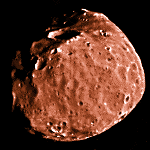 Regular readers to this site may have read in the past our articles on Phobos, which is one of the small moons that circle around Mars. As we have speculated before, this 'moon' seems to be very odd, and has always been considered a rather mysterious object, as has its smaller twin, Deimos. Recent events seem to have strengthened our beliefs as news recently reached us that both Moons have mysteriously disappeared... But first, lets look at the history of these moons and tell you of some strange events that have been related to them in the past. Joseph Shklovskii noted member of the Soviet Academy of science and co-writer with Dr Carl Sagan of 'Intelligent life in the universe', once calculated from the estimated density of the Martian atmosphere and the peculiar "acceleration" of Phobos, that the satellite must be hollow.
Regular readers to this site may have read in the past our articles on Phobos, which is one of the small moons that circle around Mars. As we have speculated before, this 'moon' seems to be very odd, and has always been considered a rather mysterious object, as has its smaller twin, Deimos. Recent events seem to have strengthened our beliefs as news recently reached us that both Moons have mysteriously disappeared... But first, lets look at the history of these moons and tell you of some strange events that have been related to them in the past. Joseph Shklovskii noted member of the Soviet Academy of science and co-writer with Dr Carl Sagan of 'Intelligent life in the universe', once calculated from the estimated density of the Martian atmosphere and the peculiar "acceleration" of Phobos, that the satellite must be hollow. 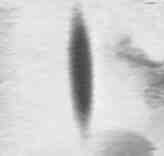
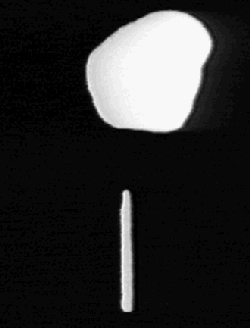
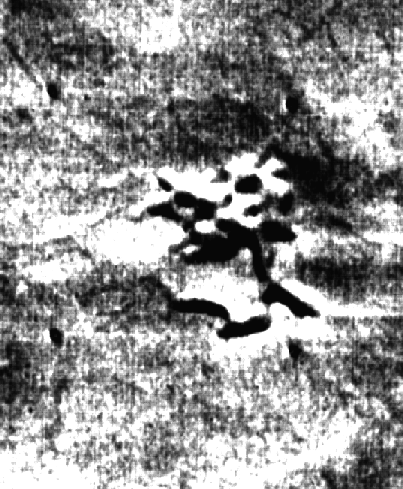
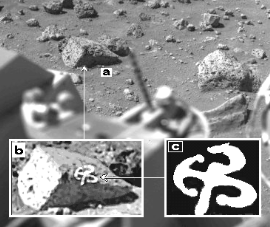
Post Comment Private Reply Ignore Thread
Top • Page Up • Full Thread • Page Down • Bottom/Latest
#1. To: jethro tull, woo woo list (#0)
fyi. the whole phobos mystery is rather intriguing.
I went to the park and saw this kid flying a kite. The kid was really excited. I don't know why, that's what they're supposed to do. Now if he had had a chair on the other end of that string, I would have been impressed. -Mitch Hedberg
Top • Page Up • Full Thread • Page Down • Bottom/Latest